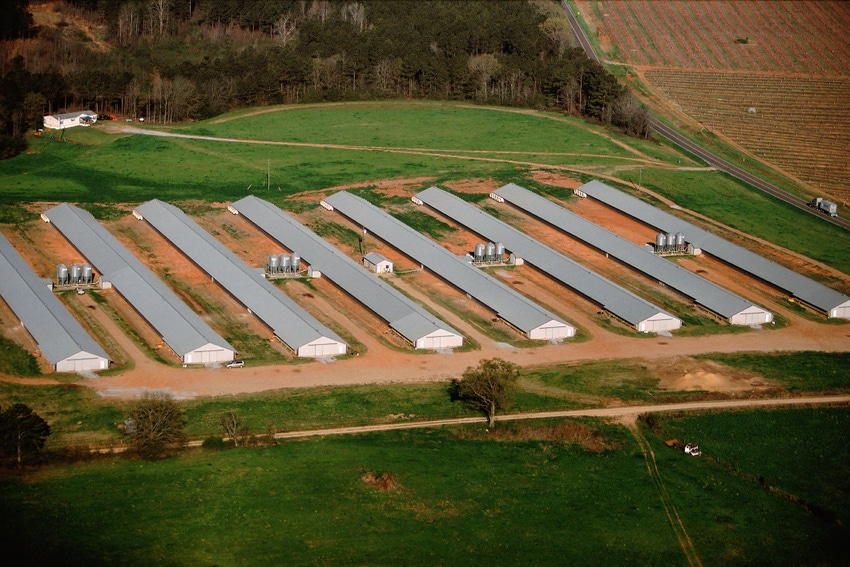HPAI spreading nationwide in commercial poultry flocks, dairies
Second human case of virus has also been reported in the US.

Both Texas and Michigan officials have confirmed the detection of highly pathogenic avian influenza (HPAI) in commercial poultry flocks. Texas Agriculture Commissioner Sid Miller announced April 2 that a Cal-Maine Foods egg laying operation had received official notice of a positive test for H1N5. Due to U.S. Department of Agriculture (USDA) guidance for poultry infections, Cal-Maine will be required to depopulate 1.6 million laying hens and 337,000 pullets at their Farwell, Texas, facility. This accounts for approximately 3.6% of the company's total flock as of March 2, 2024.
"This is absolutely devastating news for Cal-Maine and the entire Panhandle region, which has already suffered so much already," Commissioner Miller said “Given this latest development, all producers must practice heightened biosecurity measures. The rapid spread of this virus means we must act quickly."
The Michigan Department of Agriculture & Rural Development (MDARD) and the Michigan State University Veterinary Diagnostic Laboratory also announced the detection of HPAI in a commercial poultry facility from Ionia County. Since the disease was first detected in Michigan in 2022, this is the fourth detection of HPAI in a commercial facility, and the first detection in Ionia County.
“As the weather remains cool and wild birds continue their migration, conditions are ideal for the virus to thrive and spread. While these conditions persist, the need to take preventative measures will be high,” said Michigan State Veterinarian Dr. Nora Wineland, DVM, MS, DACVPM.
“Keeping HPAI out of Michigan’s domestic animals remains a team effort, and it must be a top priority for all.”
HPAI is a highly contagious virus that can be spread in various ways from flock to flock, including by wild birds, through contact with infected poultry, by equipment, and on the clothing and shoes of caretakers. To protect other facilities in Michigan, the premises is currently under quarantine, and the birds will be depopulated to prevent disease spread.
"Michigan's egg farmers are among the most proactive in the country, with their diligence leading to rapid detection of HPAI in this flock,” said Dr. Nancy Barr, executive director of Michigan Allied Poultry Industries. “Strict biosecurity measures are in place to protect flocks from the increased threat of HPAI.”
While poultry may show no symptoms at all, clinical signs of HPAI in birds include sudden death without any prior symptoms of illness; lack of energy and appetite; a drop in egg production or soft-shelled, misshapen eggs; swollen eyelids, comb, wattles, and shanks; purple discoloration of the wattles, comb, and legs; gasping for air (difficulty breathing); nasal discharge, coughing, sneezing; twisting of the head and neck (torticollis); stumbling or falling down; and diarrhea.
Just last week, Michigan also reported avian influenza in cattle on a dairy farm that had recently transported cattle from a Texas dairy farm that had detected the virus.
The Center for Disease Control (CDC) also confirmed this week a positive test of H5N1 in a Texas dairy worker who had direct contact with cattle suspected of being infected. It marked the second human case of H5N1 flu in the U.S. and the first associated with exposure to cattle, according to the CDC.
USDA confirmed on April 1 that five new H5N1 cases on dairy farms had been detected, bringing the total to 11 across five states. HPAI has been found in dairy herds in Texas (7), Kansas (2), Michigan (1), and New Mexico (1). The presumptive positive test result from Idaho is still pending.
Cattle impacted by HPAI exhibit flu-like symptoms, including fever and thick and discolored milk, accompanied by a sharp reduction in milk production averaging between 10-30 pounds per infected cow. Among the dairies whose herds are exhibiting symptoms, USDA’s Animal & Plant Health Inspection Service said the affected animals have recovered after isolation, with little to no associated mortality reported. Still, it is vital that dairy facilities nationwide practice heightened biosecurity measures to mitigate further spread.
About the Author(s)
You May Also Like





